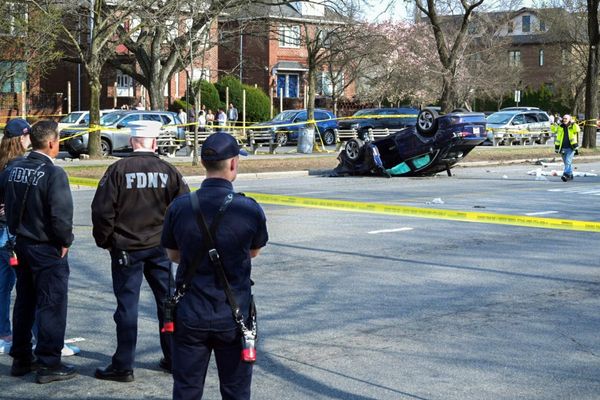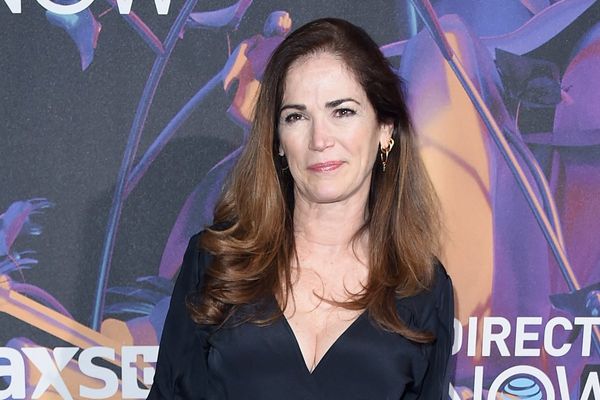LEXINGTON, Ky. — “A blind man can say, ‘I see a good horse,’ ” Fred Mitchell said.
Mitchell has no blind spots when it comes to breeding talented Thoroughbreds. As the owner of Clarkland Farm in Kentucky, Mitchell and his late wife, Nancy, have bred successful racehorses for over 40 years.
One of the farm’s biggest success stories was somewhat unexpected. The colt was born in 2015 and later named Mendelssohn.
The colt was a late bloomer, and he had a good temperament, said farm manager Marty Buckner, the Mitchells’ daughter. As he grew, the colt impressed those who looked at him, too, and he was prepped for auction at the 2016 Keeneland September Yearling Sale, the most prestigious Thoroughbred auction in North America.
“You don’t know how high it’s going to go, but you know that you’ve got a lot of interest,” Mitchell told the Herald-Leader. “Word gets around that you’ve got a nice horse.”
The word had gotten around, and Michael Vincent Magnier, son of Irish billionaire John Magnier who owns Coolmore Farm, outlasted all and purchased the colt for $3 million, the highest-priced yearling of the 2016 sale.
The weight of expectations rested firmly on Mendelssohn’s back, but he quickly delivered.
Mendelssohn won a slew of stakes races and earned a spot in the 2018 Kentucky Derby. He finished his career with just over $2.5 million in earnings and is now standing stud in Versailles, Kentucky, with a $35,000 fee. His first progeny began their racing careers this year.
Many might assume that most horses that top the Keeneland September Sale like Mendelssohn also go on to win prestigious races and have historic careers, but the truth is more complicated, and often the sale’s most expensive horses can also be the most disappointing.
For some, the reasons are statistical. For others, a big risk is deemed necessary to claim a significant reward.
When this year’s Keeneland September Yearling Sale begins Monday, the latest crop of exquisitely bred Thoroughbreds will entice owners to open their wallets.
Will their investments pay off?
Mixed results for the most expensive
Examining records on Equibase shows that the most expensive yearlings sold at the Keeneland September Sale between 2009 and 2019 failed to earn back their buyers’ initial investment in career racing earnings.
The top buyers spent a combined $34.6 million on the sale-topping 12 yearlings. But these 12 horses finished their racing careers with only a combined $3.97 million in on-track earnings, about a $30.6 million loss. No horse earned back its initial price at the racetrack.
Of the 12, Mendelssohn had the most successful racing career and was the only horse to earn over a million dollars.
Other horses found success, too. Mohaymen topped the 2014 sale when he sold for $2.2 million.
He won four graded stakes races, placed fourth in the Kentucky Derby, finished his career with just under a million dollars in winnings, and is now standing at stud.
On-track performance is the most visible and celebrated facet of Thoroughbred racing but in many instances merely a necessary precursor to riches that await in the breeding shed. Stud fees allow owners to extend the earning capacity of a racehorse long beyond its racing days.
According to The Jockey Club breeding statistics, Mendelssohn has sired 356 Thoroughbreds in his two seasons standing at stud, and with a $35,000 stud fee per live foal, has readily recouped his $3 million purchase price.
Mohaymen, whose first foal crop was born in 2019, has also had a prolific career standing at stud, and based on Jockey Club data, has sired 145 horses. Coupled with his $7,500 stud fee, Mohaymen’s owners are close to breaking even.
But not all sales-toppers become successful racehorses or stallions or broodmares. On average, the sale-topping 12 won only one race, four never took the track, and six made less than $10,000 during their careers. One horse, a filly named Sotto Voce, sold for $2.7 million in 2017 and is not registered on Equibase.
Buying the most expensive yearling at Keeneland isn’t necessary to find a champion racehorse. When it comes to buying winners, bidding less has led to more success.
An examination of career earnings on Equibase reveals that the top-earning racehorses from 2009 to 2021 that sold at Keeneland were sold for considerably less than their pricier counterparts.
The top-earning horses from 2009-2021 were sold on average for about $300,000 and finished their racing careers with an average of almost $8.7 million in earnings. All recouped their purchase prices, and each top-earning horse made an average of 28 times more in career earnings than what buyers paid for them.
Some of the highest-earners sold at the Keeneland September Sale blew away the sale-topping 12 on the track, too. Hall of Famer Zenyatta, who only sold for $60,000, finished her career with $7.3 million in earnings and made more money than any other horse on the planet in 2009. She also won 19 races in 20 career starts. Combined, the sale-topping 12 won only 16 races.
The search for the next great racehorse
It’s an understatement to say the Keeneland September Yearling Sale is important. Beginning in 1943, the annual sale has produced over 60 horses who won either the Kentucky Derby, Preakness, or Belmont, as well as a Triple Crown winner in the last decade.
It also generates a lot of money. In 2021, Keeneland sold 2,789 yearlings in September and grossed almost $365 million. Prospective buyers and bidders go to great lengths to inspect and scrutinize the horses they are going to bid on.
Horses are X-rayed for injuries or deformities, pedigrees are scrutinized, and yearlings are “scoped,” their throats examined via an inserted endoscopic camera to glean information about the respiratory tract.
Each horse entered in the sale is examined by a team of Keeneland representatives led by vice president of sales Tony Lacy, a former jockey, consignor, and fourth-generation horseman.
Lacy and his team evaluate the yearlings in the spring based on physical characteristics, and pedigree. Lacy said it is also important to give buyers from different markets a diverse selection of yearlings.
“It’s important for us to represent the buyer and the seller equally in a balanced format, and also give the yearling its best opportunity to be in the best hands possible so it goes on and flourishes in the future,” Lacy said.
The on-track performances of a sire’s progeny throughout the year also lead to fluctuations in evaluations leading up to the sale, Lacy added.
“We watch the markets like any stock trader would watch the stock exchange, seeing where the trends are and what is going on on the racetrack on a day-to-day basis,” he said. “So, we’ve got to take a little bit of educated judgment on that.”
Strategies for buying yearlings at the sale differ from farm to farm with some buyers adopting a more aggressive bidding strategy, while others choose to take a more conservative approach.
One of the farms that is more cautious is Juddmonte Farms. Founded in 1980, the farm has bred Kentucky Derby winner Mandaloun and Epsom Derby winner Frankel, and the farm’s Thoroughbreds have generated $99.2 million in career earnings.
Juddmonte USA General Manager Garrett O’Rourke said the farm isn’t trying to top the sale.
“We go in with discipline, and we have a budget, and we have to stick to the budget,” O’Rourke said.
O’Rourke added that sometimes sale-topping yearlings go on to great career success, but the probability of that happening is low.
“That’s going to happen once every 20 years in all probability. And that’s just the way statistics play out,” O’Rourke said. “So, we try to buy the very best quality, even though we’re not on the top end, we still spend a lot of money.”
In fact, a majority of Juddmonte’s most successful horses were bred on the farm and not bought at Keeneland. But Juddmonte’s greatest success did come from the Keeneland September Yearling Sale.
Playing a difficult game
In 2014, Juddmonte bought a greyish colt at the Keeneland Sale. His pedigree was impeccable and included 1953 Preakness and Belmont winner Native Dancer, but the $560,000 Juddmonte spent on the yearling was not among the top 10 most expensive horses bought that year.
Later named Arrogate, the roan colt went on to make $17.4 million in career earnings — the most of all time — and led all of horse racing in earnings in 2016 and 2017.
In 2014, the two horses who topped the sale at $2.2 million, Mohaymen and Air Vice Marshal, both had respectable careers, but neither compared to Arrogate. In career earnings alone, Arrogate made more than 13 times what Mohaymen and Air Vice Marshal did. Arrogate singlehandedly outearned the sale-topping 12.
The 2014 sale also provided insight into who has paid some of the highest prices at Keeneland recently. Of the big spenders at the sale, Michael Magnier bought five of the highest-priced yearlings sold at Keeneland from 2009 to 2019.
Magnier has purchased numerous successful racehorses at the sale, but paying the highest price has led to mixed results. Magnier has spent $12.8 million total bidding on five of the sale-topping horses. These horses posted a combined $2.8 million in career earnings with Mendelssohn making up 90% of that. Three never ran a race.
However, swinging and missing at the Keeneland September Sale is viewed by many as a necessary path to hitting the occasional home run.
Ryan Mahan, Keeneland’s director of auctioneers, said most high-profile buyers at the sale are not surprised that some of their investments don’t pan out.
Mahan has been in the horse racing business for decades and became head auctioneer at Keeneland in 2001. He has auctioned off thousands of horses, including Kentucky Derby winners, and he often personally inspects several yearlings each year.
He also frequently talks with people in the industry and said most buyers have a good idea of what to expect from a sale.
“A good friend of mine bought two horses for quite a bit of money last year. And he said, ‘You know, I know it’s a tough game. … Well, we’ll see you in a few weeks in September, we’ll try it again,’ ” Mahan said. “Almost 100 percent of the guys understand the risk, are willing to take that risk, and love to be a part of the game. … They know what they’re getting into.”
That said, nothing can prepare buyers for tragedy. The top-selling yearling in 2019 was America’s Joy.
Both Buckner and Mitchell knew she was special when she was born on Clarkland Farm.
“I’ve never been around a horse like her in my life and I’ll never be around another horse like that again in my life,” Buckner said.
Unlike Mendelssohn, she was an excellent physical specimen from the start. She also had a stellar pedigree, with the Triple Crown winner American Pharoah as her sire. America’s Joy was entered in the 2019 sale and many showed interest in her before the sale, Mitchell said. He thought it was possible Clarkland Farm could top the sale again.
“As a small breeder, you dream that you could possibly do it one day or another but not twice,” Mitchell said.
Lightning did strike twice for Clarkland Farm when the battle to buy America’s Joy concluded at an eye-popping $8.2 million, but she would never get the chance to race.
America’s Joy died in a training accident at Saratoga in 2021.
2022 Keeneland September Yearling Sale
— When: Monday through Sept. 24
— Schedule: Book 1 sessions begin Monday and Tuesday at 1 p.m.; Book 2 sessions begin Wednesday and Thursday at 11 a.m.; Friday, Sept. 16 is an off day; Sessions begin Sept. 17-24 at 10 a.m.
— Admission and parking: Free and open to the public
— Online: Follow the auction at Keeneland.com







